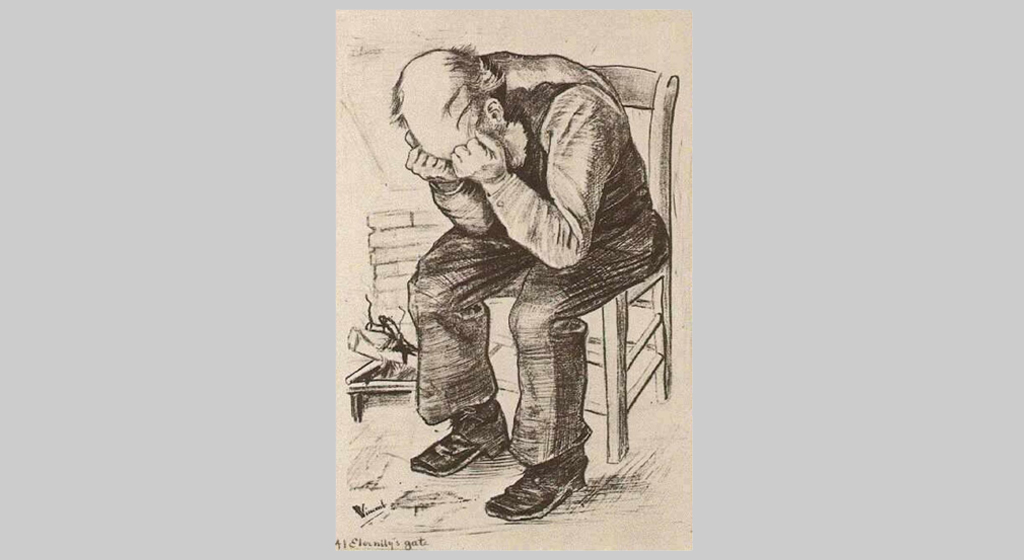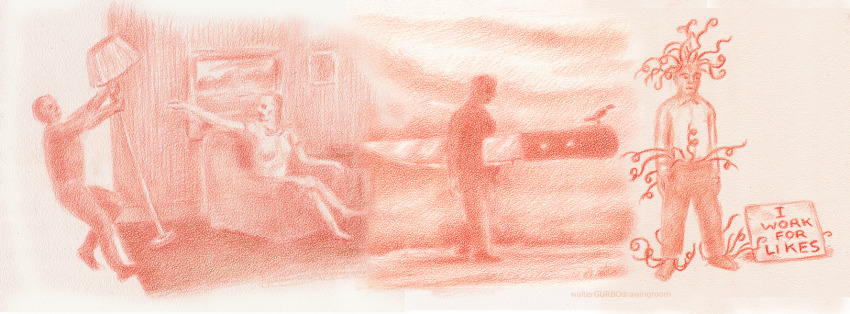“Worn Out,” Vincent Van Gogh, Van Gogh Museum, Amsterdam, Netherlands
………………………………………………………………………………………………………………………………………………………………………
Not-So-Starving Artists
By Mark Levy
You’ve heard the expression, “starving artist.” It refers to a person who performs or paints or composes or writes poetry, mostly, and if he earns money at all, he barely pays his bills. He may not be starving, but he certainly isn’t getting fat ordering garlic mashed potatoes with his surf and turf at Morton’s Steakhouse.
An example of a starving artist is Vincent Van Gogh, the great Dutch artist who shot himself to death at the age of 38 and who, in his lifetime, had sold only one or maybe two of his 2,000 paintings, which included 860 oil paintings. In a three-year period alone, he knocked out 37 self-portraits. Some of his paintings have sold recently for $100 million apiece, give or take. Ah, if he had only doubled his life span. Timing, as we say in the art biz, is everything.
Another starving artist was Wolfgang Amadeus Mozart, the prolific composer who created 600 musical works. He also died at a premature age, but not before he composed music that has since been incorporated in some 200 movies. In addition to Elvira Madigan, movies that feature his music include but are not limited to Amadeus, American Gigolo, Anne Frank, The Associate, Babette’s Feast, Barry Lyndon, Batman, A Beautiful Mind, The Big Lebowski, The Bonfire of the Vanities, Bridget Jones’s Diary, and Ace Ventura: Pet Detective. And those are just the movies with titles beginning with the letters, A and B. Wolfgang died at the ripe age of 35 and in debt, and was buried in a common grave.
It’s more than a little depressing to dwell on talented artists who were not recognized for their contributions during their lifetimes. I’d rather focus on the exceptions to the starving artist rule.
Take Gioachino Rossini, for example. He was known as the Italian Mozart, but a lot more successful during his life. In addition to the Lone Ranger Overture that he composed for Clayton Moore and Jay Silverheels, he wrote about 40 operas, and retired at only 38. In his retirement, he established his reputation as an amateur chef and a corpulent gourmand. At his death in 1878, his estate was valued at well over a million dollars, which is hi ho and away impressive now, to say nothing of 136 years ago. Gioachino was anything but a starving artist.
Pablo Picasso is another artist who made it big during his lifetime. Picasso constructed a Gothic home and three large villas on the French Riviera. He was commissioned to make a maquette for a public sculpture to be built in Chicago, known as the 50-foot-high Chicago Picasso. For that sculpture, one of the most recognizable landmarks in downtown Chicago, Picasso declined his $100,000 fee, but donated it to the people of the city. The number of his works has been estimated at 50,000, comprising almost 2,000 paintings and thousands of prints, tapestries, and rugs. He also has the distinction of having more of his paintings stolen than any other artist. Towards the end of his life, as a world-famous artist, his local wine merchant and local bakery refused to cash Picasso’s checks, since his autograph was worth more than the face value of the checks. His estate was estimated to be a quarter of a billion dollars and you have to wonder how much of that was due to bottles of wine he didn’t pay for.
Salvador Dali was reputed to be worth $10 million before he died, part of which sum came from over 100,000 canvases he signed in blank so others could pass off their paintings as authentic Dalis once he passed on and only the persistence of memory remained of Salvador.
Andy Warhol left 4,000 paintings and 66,000 photographs. His estate was valued at $220 million, which works out to about 172 million Campbell cans of tomato soup.
Ernest Hemingway had accumulated over a million dollars’ worth of stocks that made up his estate, believing, apparently, it’s better to have than to have not.
Michael Jackson’s estate was worth only $7 million when he passed away, according to his executors, but the IRS still charged the estate $700 million in back taxes. Luckily, Michael Jackson earned over $1 billion the year after he died. So now his heirs can tell the IRS to beat it.
Elvis Presley’s home is visited by more people than any other private home in America, except the White House. Elvis earned $100 million during his life, but had only a measly $5 million in his bank when he died, which still could have bought a lot of blue suede shoes.
There’s great consolation thinking that these essays, like Van Gogh’s, may be worth more after I’m dead. Under the circumstances, though, that ain’t saying much.
……………………………………………………………………………………………………………………………………………………………………………………….
Walter Gurbo | You can read more about Walter in About Us.



Recent Comments